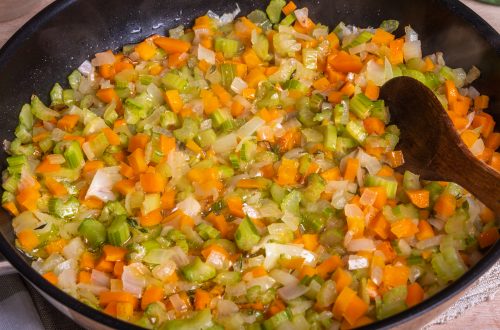
Curries Around the World
When I think of Indian food, curry comes to mind. Indian dishes are popular around the world. Cookbook author Mndula Baljekar describes brightly colored vegetables in rich sauces; tender meat, poultry, and fish; nutty beans and lentils; and a wild array of spices. Culinary traditions within India have been influenced by geography and climate. There are vast distances – picture a country that would stretch from the Canadian border to well south of the lowest tip of Texas – without a modern transportation infrastructure. As a result, cooks seek local, fresh ingredients. And what they eat depends on where they live and what religion they practice.
The secret to Indian cuisine’s pungent flavors lies in its access to a host of fresh spices. The country known as the spice bowl of the world has been the source of exotic flavorings for thousands of years. The hot, damp climate, particularly in the south, meant that meat deteriorated quickly. That reality created the conditions for cooks to experiment with a variety of the locally abundant herbs and spices to disguise any off flavors. Meals heavy on vegetables and grains could be enhanced with the cook’s special spice blend. These dishes, says Baljekar, could be accompanied by pickles, chutneys, and salads, also flavored with fresh herbs and chilis, yogurt, or lime juice.
The variety of dishes has been enhanced by foreign influences. The country traded with the Romans and Han China and later the Persians. The Mongols invaded, and a distant relative of Genghis Khan became the first Mughal emperor. Mughal cuisine dominates northern cuisine. When the Portuguese decided to break the Venetian monopoly on the spice trade, they sent Vasco da Gama to India, where they introduced the chili pepper and vinegar. The vinegar-laced preserved meat the sailors brought with them, which they served as the Portuguese vinha d’alhos, became the Indian-spiced vindaloo. When word got back to Europe about the spices, the Portuguese were soon joined by the Dutch, Arabs, Danish, Spanish, and of course, the British.
Curries for the nabobs in India
That’s where we get to curry. Indian cooking relies on combinations of a panoply of indigenous flavorings and spices to fashion the taste of a dish as well as its color and texture. These might include coriander, cumin, turmeric, fenugreek, fennel, cinnamon, mustard, garlic, ginger, black pepper, and chilis. Local practice requires the use of fresh herbs and spices, which can go stale and lose their piquancy rather quickly. Before the Europeans arrived, people in the southern regions, in particular, were eating fish and other meats with rice combined with a sauce they called kari, a Tamil word meaning “to bite,” which became “curry.”
Britain’s Queen Elizabeth I set up the British East India Company to counter the international expansion of the Portuguese and Dutch. The Britons based their operations in Chennai, the main city in the Tamil territory, then set out to conquer the country. Once the population was pacified, they set up outposts in India, and the bureaucrats who came there to live, referred to as nabobs, loved the food. That hankering remained when they returned to England. But the spices weren’t readily available in England, so the East India Company packaged a blend of spices, then imported it from India. Voilà: curry powder.
Curries for the folks back in England
Now, lest you think that zest for curry has abated in Britain, a survey done for the country’s National Curry Week a couple of years ago found that 25 percent of Britons eat curry once a week, and some 11 percent eat it three to seven times a week. Only one in 10 people in England never eat curry.
Of course, the recipes from India have been modified based on tradition and ingredient availability, but chicken masala and chicken korma are the favorites. And the survey found that the British who favor these dishes lean toward the hotter curries.
Curries in Thailand, the Philippines, and Japan
Curries can also be found across the rest of Southeast Asia, with the Thai versions being the most prominent. Thai curries tend to be created as pastes, both red and green, versus dry, and they are composed more of herbs than spices. Filipino curries tend to be milder to suit the local palate. With a base of garlic, ginger, and onions in most Filipino curries, a multitude of ground spices (masalas) defines each dish. In a land where bay leaves and peppercorns count as spices, the final product varies from region to region, depending on the addition of various dried and ground spices. As for Japan, the cooks make their curry powder with fewer spices. Japanese curries are described as warmer and comforting in an understated manner, while the Indian curries are more vibrant, loud, and adventurous.
As for me, I use the best spices and herbs at my disposal to create a savory meal, hoping that my guests ask for more.
Do have ideas for topics you’d like me to cover? Or comments on this blog? Please click on “Read in Browser” or on the headline to view the blog on the website. You can log in and comment at the end of the blog to share your thoughts and start a discussion.
If you’d like to share the blog, click on the Facebook icon or one of the others. Thanks!




